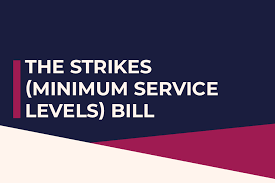Labor Unions under Employment Law
Labor Unions under Employment Law
1. Introduction
Labor unions, also called trade unions, are organizations formed by workers to protect their rights, improve working conditions, and negotiate wages and benefits with employers. They play a vital role in balancing the power between employers and employees and are recognized under employment and labor laws.
In India, labor unions are governed primarily by the Trade Unions Act, 1926, along with relevant provisions in the Industrial Disputes Act, 1947 and other labor legislation.
Globally, unions function to collectively bargain, prevent exploitation, and represent employees in disputes.
2. Functions of Labor Unions
Collective Bargaining: Negotiating wages, benefits, and working conditions on behalf of workers.
Representation in Disputes: Representing employees in grievances, disciplinary actions, or strikes.
Protection of Worker Rights: Ensuring compliance with labor laws.
Promotion of Welfare: Providing training, social security guidance, and legal assistance.
Political Advocacy: Lobbying for laws favorable to workers.
3. Rights and Powers of Labor Unions
Right to register as a trade union under the Trade Unions Act, 1926.
Right to collect membership fees and operate democratic governance within the union.
Right to represent members in industrial disputes.
Right to strike, within statutory limitations.
Limitations:
Cannot engage in unlawful strikes or coercion.
Must follow procedural rules for recognition, strikes, and lockouts.
Cannot violate employer property rights or safety regulations.
4. Legal Framework in India
Trade Unions Act, 1926: Recognizes the legal status of unions and protects their activities.
Industrial Disputes Act, 1947: Empowers unions to participate in dispute resolution and collective bargaining.
Factories Act, 1948 and Shops & Establishment Acts: Provide a legal framework for worker welfare.
5. Case Laws
(a) Bharat Earth Movers Ltd. v. Their Workmen (1964 AIR 671)
Facts: Workmen went on strike demanding better wages.
Held: The Supreme Court held that strikes conducted within the statutory framework are legitimate.
Principle: Labor unions have the right to strike if they comply with statutory procedures.
(b) Delhi Cloth & General Mills Co. Ltd. v. Their Workmen (1958 AIR 329)
Facts: Union represented workers in wage negotiations and disputes.
Held: Court recognized the union’s right to represent workers and engage in collective bargaining.
Principle: Trade unions are legal entities entitled to represent employee interests.
(c) All India Bank Employees Association v. Union of India (1979 AIR 253)
Facts: Employees challenged government policies affecting service conditions.
Held: Supreme Court held that unions can represent members in matters of service conditions, but must do so within the law.
Principle: Unions act as a bridge between employees and employers/government in negotiating rights.
(d) Steel Authority of India Ltd. v. National Union of Steel Workers (1990)
Facts: Dispute over recognition of union and entitlement to negotiate wages.
Held: Court emphasized that only legally recognized unions have the authority to represent workers collectively.
Principle: Recognition and registration are crucial for a union to exercise its powers.
6. Employer-Union Relations
Employers must engage in good faith during collective bargaining.
Unions must operate within legal boundaries, avoiding illegal strikes or intimidation.
Industrial courts and labor tribunals often intervene in disputes between unions and employers.
7. Conclusion
Labor unions are essential for safeguarding employee rights, promoting fair wages, and ensuring industrial harmony. Indian courts and legislation recognize unions as legal entities with specific rights and duties. Successful union operations require adherence to legal frameworks, democratic governance, and constructive engagement with employers.









0 comments